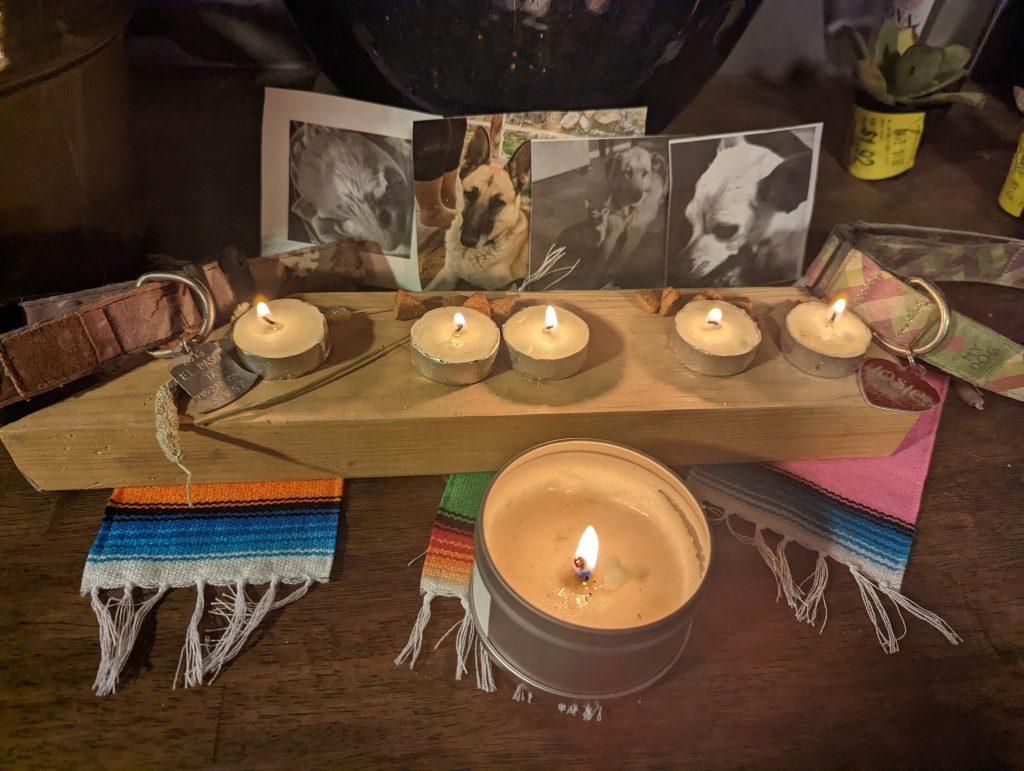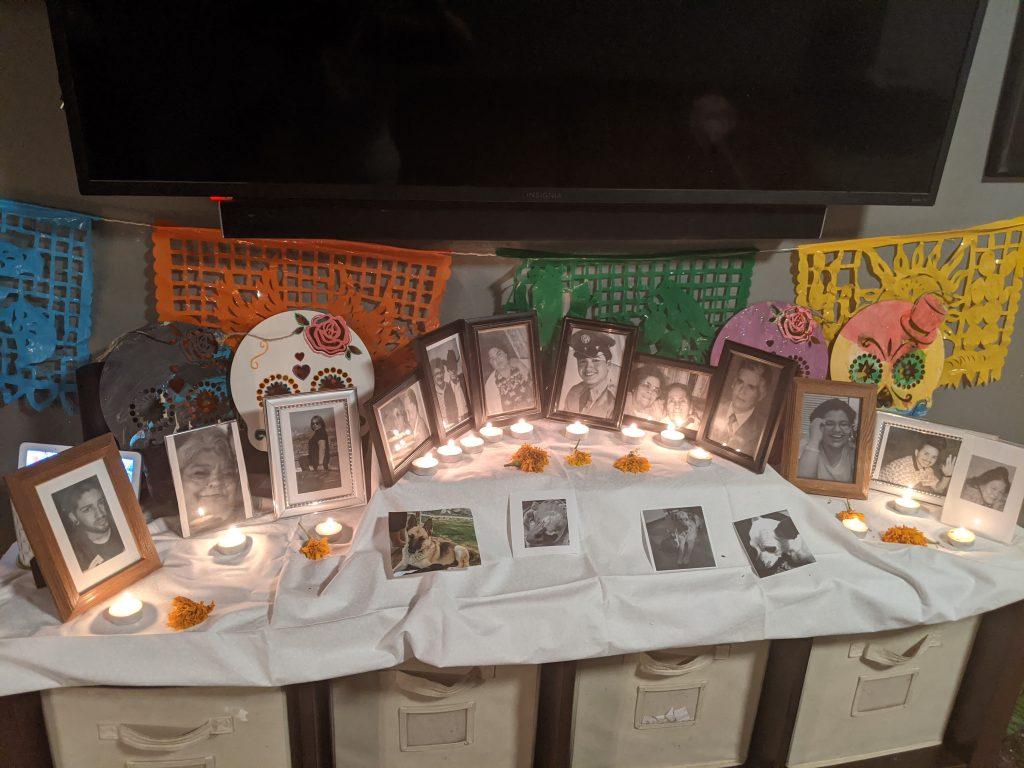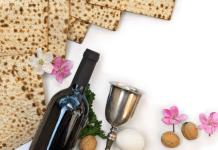For the past seven years, we have celebrated Dia de Los Muertos. We do so by creating an altar, or an ofrenda, for our loved ones. Growing up, we didn’t celebrate Dia de Los Muertos. However, I do remember when we visited a grave site at the cemetery in Juarez on Dia de Los Muertos. The decorations that day and the lively mood were something I never forgot. As an adult, I fell in love with the holiday in college when I learned about the history through Chicano Studies.
» » » » » » » » » RECOMMENDED RESOURCE: Ultimate Guide to Fall in El Paso « « « « « « « « «
Once we felt the kids were old enough to understand the holiday, we started working on our own ofrenda. There are several different ways to celebrate Dia de Los Muertos, and every family has their own unique ways. Below are ways we celebrate:
Important Dates
Recently we started celebrating Dia de Los Muertos on October 27. On that day, it is said that your pets will return to visit you if you put an ofrenda out for them.
We decorate our ofrenda with photos of our departed pets. Ours consisted of four dogs and a guinea pig. This year we will be adding our loving pekingese to the ofrenda. We decorate our ofrenda with things that remind us of them and their favorite foods.
On our ofrenda, we have our pet’s collars and their favorite toys. The base of our ofrenda is a large piece of wood our German Shepherd loved to play with. We place a candle for each of them which we light on that night.

On October 31, it is said that the gates of the departed humans open and departed children can visit for one night. On November 2, the gates are again open and the departed adults can visit for one night.
Ofrenda Decorations
I place photos of our dearly departed on our ofrenda along with candles for each person. Each ofrenda has different levels. You can have an ofrenda for an individual person, but I like to celebrate my husband’s and my combined history in one big ofrenda. I like to place our grandparents up top and have it go down by aunts, uncles, family friends, and cousins.
Our ofrenda is fairly simple compared to others. Normally people add the favorite foods and items that remind them of their loved ones.

Pan de Muerto
Pan de Muerto is traditionally made during Dia de Los Muertos. Its origins are a bit morbid, but history is important! It is said in ancient Aztec times that the bread would be made with amaranth and human blood as a sacrifice to the gods. Other historic accounts say they would sacrifice a noble woman and serve her heart with amaranth to the priest as a thank you to the gods for a good harvest. When the Spaniards came, they found the practice too barbaric. They then began making a Pan de Muerto bread with wheat that they introduced to Mexico.
In current day, Pan de Muerto is an important part of the Dia de Los Muertos celebration. Pan de Muerto is provided as an offering to our dearly departed. If you’ve never tried it before, it tastes very similar to pan dulce except the paste topping is replaced with a sugar coating.

Cempasuchils
Marigolds, or cempasuchils, are the flower of choice during Dia de Los Muertos. Supposedly, the fragrance of the flowers will lead your dearly departed to your home for one night. Adorn your ofrenda with these beautiful flowers! The bright cheerful colors are also a way to bring joy to the celebration. It wouldn’t be a Dia de Los Muertos celebration without marigolds.
Honoring our Departed Ancestors
Dia de Los Muertos is so fascinating because it’s a day when we celebrate life and our history. In this way, we can celebrate the people who helped shape our family. We’ve mourned them when we lost them, and on this day, we can celebrate them again. It truly is a beautiful tradition.
We’ve found that making ofrendas with our children has created an avenue to talk about our past. Our children see photos, some of people they’ve never meet, and we find ourselves reminiscing. We share unique stories, and in doing so, we keep their memories alive.
Ofrendas help us paint a clearer picture of our history to our children while also celebrating the people who mean the most to us.
The opinions expressed in this post are those of the author. They do not necessarily reflect the official policy or position of El Paso Mom, its executive team, other contributors to the site, its sponsors or partners, or any organizations the aforementioned might be affiliated with.









